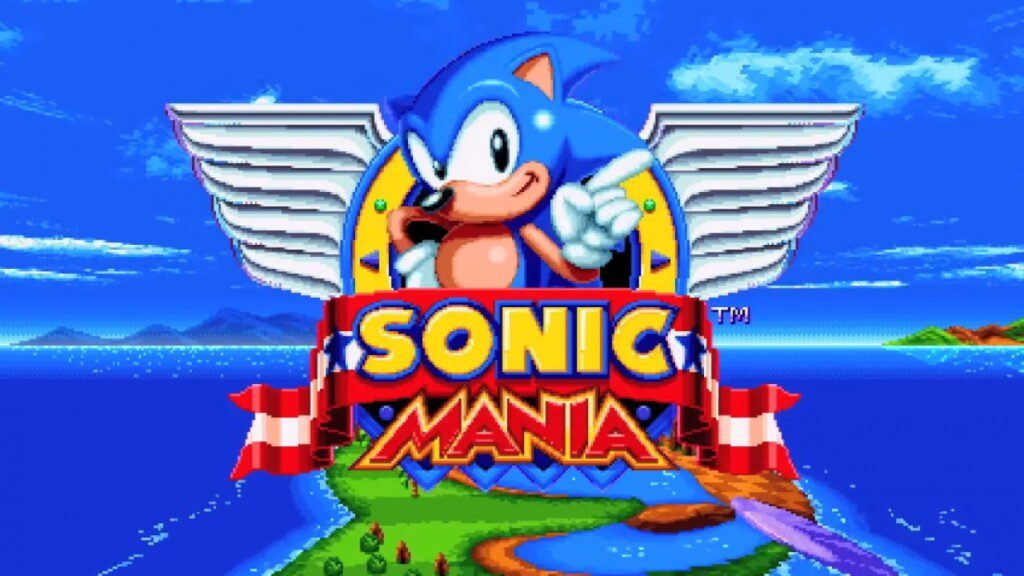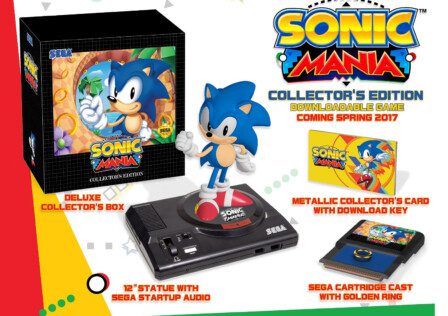Sonic fans would be forgiven for treating Sega’s July announcement of an all-new 16-bit-style game with a degree of skepticism – after all, the publisher doesn’t exactly have a stellar track record of harnessing nostalgia for its enduring mascot.
When Dimps’ Sonic the Hedgehog 4 proved itself to be undeserving of such a title by fading quietly away after two mediocre episodes in 2012, fans’ hopes of a return to the golden era of Sega’s beloved blue blur were all but extinguished.
However, in order to create a game that will be truly appreciated by Mega Drive-era fans, the gaming giant has turned to those fans themselves. Following the success of their remastered releases of Sonic 1 and 2 on mobile, long-time fan game community members Christian Whitehead (The Taxman) and Simon Thomley (Stealth/Headcannon) have been drafted in by Sega to use the former’s Retro Engine and combined expertise for Sonic Mania. Alongside PagodaWest Games – a collective whose members worked on an unofficial HD remake of Sonic the Hedgehog 2 – the team have long expressed an interest in creating an original Sonic game in the style of the original Genesis series.
Seasoned fans of the franchise will be delighted to hear that Sonic Mania largely looks and plays like it could slot right in the Genesis cartridge slot alongside the original trilogy. Beautifully smooth animations, graphics in the form of vibrant, colourful backdrops and 2D sprites, and physics that are effectively 1:1 with the original trilogy, ensure that the game is a joy to behold from the outset; no floaty physics or unnecessary pre-renders feature here.
Being a celebration of the franchise’s 25th anniversary, Mania’s levels are, appropriately, made up of remixed versions of some of the more beloved zones from the Genesis games of old, alongside a handful of original stages. In the demo exhibited at EGX, a remastered Green Hill – the first zone from the franchise’s 1991 debut – and Studiopolis – an all-new offering – were playable.
In Green Hill Zone, what initially promised to be a serviceable – if unremarkable – replication of the original level soon transformed into a fantastically diverse remix around a third of the way through Act 1. Borrowing from most of the games in the original trilogy – rather than simply Sonic 1 – Green Hill sees Sonic the Hedgehog 3’s elemental shields make a welcome and long-overdue return, while branching paths require a degree of backtracking to find all the secrets (placeholder Special Stage markers were present in the demo but sadly not playable) and rings the stage has to offer.
When the full game releases, Sonic’s faithful allies Tails and Knuckles will be playable, and evidence of exclusive paths reliant on the pair’s flying and climbing abilities, respectively, were present in the demo as Sonic zoomed around loops and spring-boarded his way through the level. Green Hill’s Act 1 ended with a boss encounter that felt somewhat familiar while refreshingly different at the same time. Although Dr Robotnik was nowhere to be seen – most likely being reserved for the final act of each stage – all of his maniacal hallmarks were there, in the form a challenging ball-swinging machine that evoked memories of the original Green Hill boss fight while being initially unpredictable in its attack pattern.
Studiopolis Zone, which I can best describe as a having cyberpunk studio backlot setting, is where Sonic Mania really impressed, however. Any fears that the developers were playing it safe by retreading old ground were put to rest as soon as the stage title card disappeared. With a vibrant, neon palette that feels more at home with the critically acclaimed Sonic CD than the Genesis trilogy, Studiopolis is intrinsically designed with a variety of new gimmicks, pitfalls and pathways for players to explore. Although the level could probably be completed in a couple of minutes, I spent a good seven minutes or so deliberately backpedalling to admire all the intersecting paths, corkscrews, lifts and springs the stage had to offer. Particular highlights included being beamed from a TV satellite van to a new part of the stage, and running behind a shadow-puppet screen while Sonic was silhouetted in the foreground.
Studiopolis’s level design is a promising indication that Mania’s original stages will hold up alongside those that are being revisited. While recent 2D Sonic titles have often been accused of having an over-reliance on speed boosters and plagued with a ‘hold right to win’ approach, the pacing and difficulty evident in Sonic Mania’s demo suggest that while speed is certainly an important part of Sonic, it isn’t the be-all and end-all: with a degree of precise platforming, traversing and collecting all being at the forefront of the player experience.
While Sonic Mania’s gameplay is mostly a faithful recreation of the original trilogy’s, at least one important new ability has been added: the drop dash. Sure to be popular with speed runners, the technique allows players to charge up Sonic’s spin dash while in the air, and immediately unleash itself upon landing. This rewards skilled players with the ability to keep their momentum going throughout a stage, though it by no means feels overpowered due to the potential pitfalls in the form of strategically placed obstacles including spike walls and enemies that may be immune to such an attack.

It would be remiss to discuss a 2D Sonic game without paying mention to its music; the original series features some of the most memorable music in video game history. Mania is set against the beautiful backdrop of a faithful, remastered score composed by Tee Lopes, well-known by fan scene members for his work in recreating Sonic 2’s iconic soundtrack. While free from the constraints of the Genesis’s limited sound hardware, Lopes’s original compositions and remixes fit perfectly into Sonic Mania’s levels and add much to their already impressive ambience. Studiopolis’s soundtrack feels inspired by the likes of Star Light and Casino Night Zone, while at the same time being able to stand up on its own merit.
Although we only got to experience a small taste of things to come, Sonic Mania is already shaping up to be one of our most anticipated Sega releases in many years. The title is scheduled to release on PC, Xbox One and PS4 in quarter one of 2017.



